

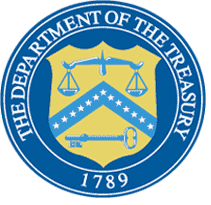
Treasury Department records indicate that the creator of its seal probably was Francis Hopkinson, who is known to have submitted bills to the Congress in 1780 authorizing design of departmental seals, including one for the Board of Treasury. Although it is not certain that Hopkinson was the designer, the Seal is similar to others he designed.
On the top of the seal is the scales for the balanced budget. In the center is a carpenter's T-square, a tool used for an even cut. Underneath is the key to the United States Treasury.
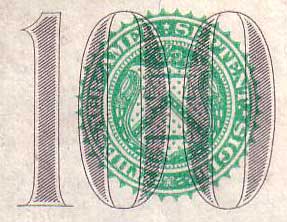 |
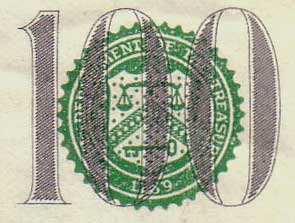 |
| Old Seal — Uses the Latin inscription, THESAUR. AMER. SEPTENT. SIGIL. around the rim. The inscription is an abbreviation for the phrase Thesauri Americae Septentrionalis Sigillum, which translates to "The Seal of the Treasury of North America". The reason for the original wording that embraced all of North America is unknown, although interestingly the first national bank—chartered in 1781 to help solidify the nation's finances—was named the Bank of North America. The earliest known usage of the seal was in 1782. When the United States Government was established in 1789, the new Department of the Treasury continued to use the existing seal | New Seal — After nearly 200 years, Treasury Secretary Henry H. Fowler approved a new, simplified version of the seal on January 29, 1968. The Latin inscription was replaced by the English, "THE DEPARTMENT OF THE TREASURY", and 1789 was added at the bottom. |
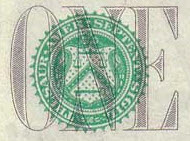 |
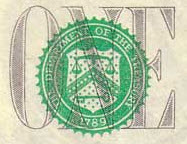 |
| 1963 $1 Federal Reserve Note | 1985 $1 Federal Reserve Note |